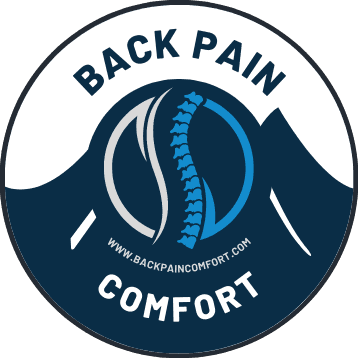
Imagine a world where our beloved grandparents can dance at family weddings, play with their grandkids in the park, and enjoy their favorite hobbies, all without the shadow of back pain. As we age, back pain can become a common yet challenging issue. However, it doesn’t have to be a constant companion in our senior years. In this easy-to-understand guide, we’ll explore six best practices for treating back pain in seniors, helping them reclaim their joy and freedom from discomfort.
Understanding Back Pain in Seniors
Before diving into treatments, it’s important to recognize that back pain in seniors can stem from various causes, such as arthritis, spinal degeneration, or muscle strain. Each individual’s experience with back pain is unique, requiring personalized care and attention.
Stay Active with Gentle Exercise
Just like a car needs to be driven regularly to keep it running smoothly, our bodies need movement to stay healthy. Regular, gentle exercises like walking, swimming, or tai chi can strengthen the back muscles and improve flexibility. These activities are not only good for the back but also for the heart and mind, making them a triple win!
Mind Your Posture
Standing and sitting with proper posture is like building a strong, stable tower with blocks. When we keep our back straight and shoulders back, we reduce the strain on our back muscles and spine. Seniors should be encouraged to use comfortable, supportive chairs and to be mindful of their posture while sitting and standing.
Heat and Cold Therapy
Applying a warm pack can soothe sore muscles, like a cozy blanket on a chilly day. On the other hand, a cold pack can reduce swelling, much like ice soothes a bump. Alternating between heat and cold therapy can provide relief from back pain and is a simple yet effective home remedy.

Over-the-Counter Pain Relief
Sometimes, a little extra help is needed, and over-the-counter pain relievers like ibuprofen or acetaminophen can be useful. It’s important, though, to use these medications wisely and under a doctor’s guidance, as they can have side effects, especially in seniors.
Regular Stretching
Stretching serves as a gentle wake-up call for your body, enhancing muscle flexibility and easing tension in the back. Consistently practicing simple stretching exercises can significantly impact managing back pain. This routine acts like a soothing balm, ensuring your back remains supple and less prone to discomfort, thereby playing a key role in maintaining overall back health and comfort.
Maintaining a Healthy Weight
Carrying extra weight is akin to constantly bearing a heavy backpack, placing undue strain on the back. By adopting a balanced diet and sustaining a healthy weight, one can considerably alleviate this stress on the back. This dietary and lifestyle adjustment plays a crucial role in diminishing back pain, promoting overall spinal health and comfort.
Physical Therapy
Physical therapy is like having a guide on a journey to better back health. A physical therapist can develop a personalized exercise program that targets the specific needs of a senior’s back condition. These exercises often focus on strengthening the core muscles, which are crucial for supporting the spine. Regular physical therapy sessions can not only alleviate pain but also improve mobility and prevent future injuries.

Ergonomic Adjustments
Making small changes in the living environment can have a big impact. Ergonomics is all about creating a space that suits our body’s needs. For seniors, this might mean using a supportive mattress for sleeping, chairs with good lumbar support, or even ergonomic tools in the kitchen or garden. These adjustments help reduce strain on the back by promoting a more natural and comfortable posture during daily activities.
Stress Management and Relaxation Techniques
Stress can be a significant contributor to back pain. When we’re stressed, our muscles tend to tense up, which can exacerbate back pain. Techniques such as deep breathing, meditation, or even engaging in hobbies can promote relaxation and reduce stress. Encouraging seniors to take time for activities they enjoy or to practice relaxation techniques can be a valuable part of a comprehensive approach to managing back pain.
Conclusion
Back pain doesn’t have to be an inevitable part of aging. By incorporating these six best practices into daily life, seniors can greatly reduce their discomfort and enhance their overall well-being. Imagine a world where back pain is no longer a barrier, and our seniors can live their lives to the fullest, surrounded by love, laughter, and cherished moments. Let’s empower our elders with the knowledge and tools to treat their back pain effectively, ensuring their golden years are as vibrant and fulfilling as they deserve.






